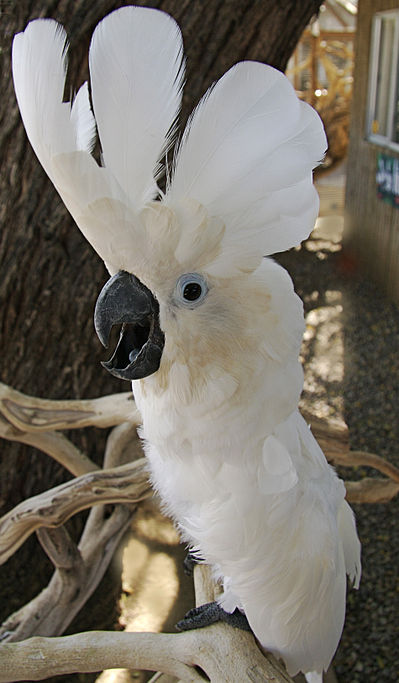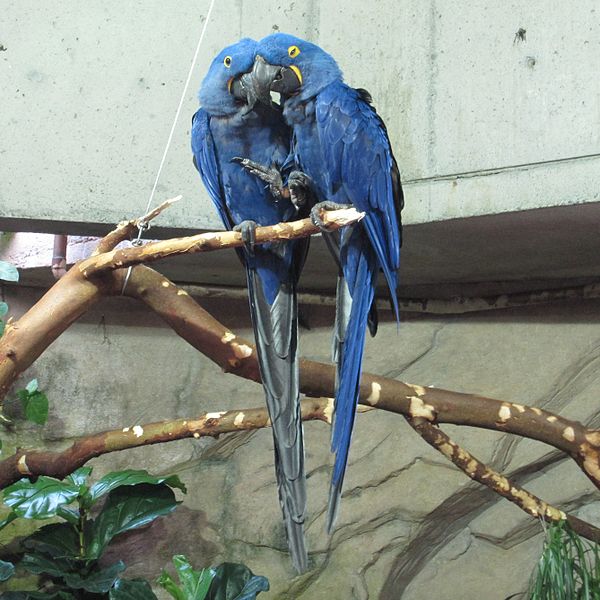The hazards of second-hand cigarette, cigar and pipe smoke to non-smokers have been well-accepted for years. As many have expected, these health concerns extend to the lungs and hearts of pets exposed to smoke as well. New evidence, however, indicates that nicotine may be harmful not only to bird respiratory systems, but also to their skin.
Respiratory Disease
Birds are especially sensitive to airborne toxins…so much so that canaries and other species long played a vital role in warning workers of the presence of poisonous gases in underground mines (the birds weakened and died long before the fumes affected the miners). It is, therefore, not surprising that veterinarians have documented a high frequency of respiratory disorders and eye irritations among birds kept by owners who smoke indoors.
However, it has also become apparent that problems of a different nature are also affecting birds owned by smokers, even when the birds are never exposed to second-hand smoke.
Nicotine on the Skin and Feathers
Nicotine is readily absorbed through the skin of some animals and clings to hair, fur and feathers. In the course of working with amphibians in zoos, I’ve been made aware of many frog and salamander deaths that occurred, often instantaneously, after the animals were handled by someone who had smoked and not washed well afterwards. It now seems clear that nicotine lingering on fingers also causes dermatitis and other skin afflictions in pet birds, and may lead to their deaths.
Birds with nicotine-stained skin often pick at their feathers, nibble on their feet and otherwise exhibit signs of discomfort. Dermatitis often follows, with small sores or areas of eroded skin developing. Birds so afflicted will pick at these areas and the scabs that form, opening an avenue of attack for opportunistic bacteria and fungi. These micro-organisms (which are always present in the environment) can cause severe and potentially fatal infections.
Further Reading
To read more about the dangers posed to birds by nicotine and other common toxins, please see this article.
Photo by jdurham from Morguefile
 That Bird Blog – Bird Care and History for Pet Birds
That Bird Blog – Bird Care and History for Pet Birds

 Many popular pet conures belong to the genus Aratinga, which means “little macaw”. Certainly they have outsized personalities, and “act” as though they are as large as macaws – if anything, they are even more boisterous.
Many popular pet conures belong to the genus Aratinga, which means “little macaw”. Certainly they have outsized personalities, and “act” as though they are as large as macaws – if anything, they are even more boisterous. Like many animals, parrots that feel threatened will attempt to make themselves appear larger…flaring their feathers and sometimes spreading the wings. The head feathers may be raised quite high, even among species without crests (the “head display kings” are the cockatoos and hawk headed parrots; please see photo). Aggressive parrots will also stare at the threat – you may notice the eye’s pupil widening as well – and may snap their beaks or scream.
Like many animals, parrots that feel threatened will attempt to make themselves appear larger…flaring their feathers and sometimes spreading the wings. The head feathers may be raised quite high, even among species without crests (the “head display kings” are the cockatoos and hawk headed parrots; please see photo). Aggressive parrots will also stare at the threat – you may notice the eye’s pupil widening as well – and may snap their beaks or scream. The majority of pet trade birds are highly social creatures. Although they may squabble during the breeding season, the presence of flock-mates is a strong breeding stimulus. Indeed, many aviculturists cite the absence of additional individuals as the main reason for breeding failures among well-bonded pairs.
The majority of pet trade birds are highly social creatures. Although they may squabble during the breeding season, the presence of flock-mates is a strong breeding stimulus. Indeed, many aviculturists cite the absence of additional individuals as the main reason for breeding failures among well-bonded pairs. Large, long-lived parrots usually raise only a few chicks each season, and may not breed every year. Unlike the species described above, most inhabit environments that offer predictable weather patterns and food sources, and so they can “afford” to spend a great deal of time in imparting survival skills to their young. Macaws, African Gray Parrots and similar species are, therefore, usually quite tolerant of their youngsters long after they have left the nest.
Large, long-lived parrots usually raise only a few chicks each season, and may not breed every year. Unlike the species described above, most inhabit environments that offer predictable weather patterns and food sources, and so they can “afford” to spend a great deal of time in imparting survival skills to their young. Macaws, African Gray Parrots and similar species are, therefore, usually quite tolerant of their youngsters long after they have left the nest.